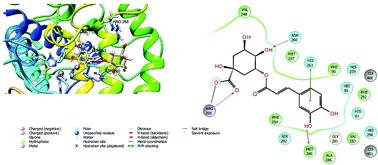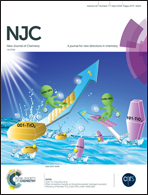Phytochemical characterization, in vitro and in silico approaches for three Hypericum species
Abstract
Members of the Hypericum genus are spread throughout the world and have a long history of use in traditional systems of medicines. In this present investigation, the methanolic extracts of aerial parts of three Hypericum species (H. olympicum (HO), H. pruinatum (HP), and H. scabrum (HS)) growing in Turkey were investigated for their key enzyme inhibitory potential. The chemical profiles were evaluated using HPLC-ESI-MSn, and their total phenolic and flavonoid contents were established. Also, relevant bioactive compounds observed in the extracts were subjected to molecular docking experiments to provide insights into their interactions with the tested enzymes. HPLC-ESI-MSn analysis revealed that the extract of HO, followed by the HS extract, has the highest total phenolic content (38 ± 1.0 mg g−1 DE), with flavonoids as major components. The extracts showed remarkable enzyme inhibitory effects against cholinesterases (AChE and BChE – 0.56–2.03 mgGALAE per g extract), tyrosinase, and α-glucosidase. Only HO (61.32 ± 3.27 mgQE per g) and HP (39.88 ± 2.51 mgQE per g) extracts showed notable inhibitory potency against lipase, while all the tested extracts exhibited modest activity against α-amylase. The phytochemicals with the most favourable interactions in the enzymatic cavity of α-glucosidase were found to be hyperoside, myricetin, and neo-chlorogenic acid, each with a docking score of −7.7. From these results, the three Hypericum species can be classified as potent sources of biologically active secondary metabolites, which warrant further investigations as novel medicinal products.



 Please wait while we load your content...
Please wait while we load your content...